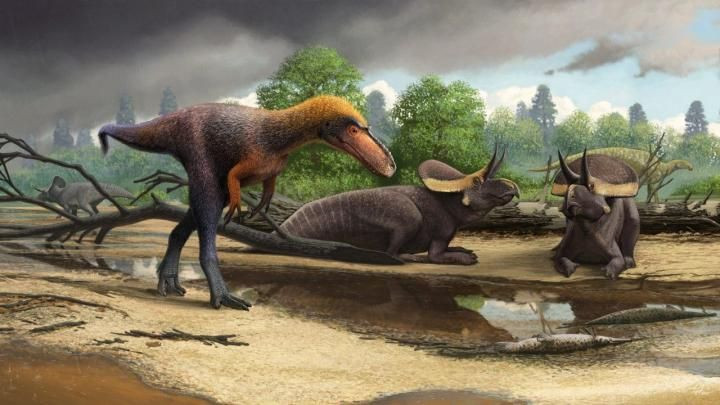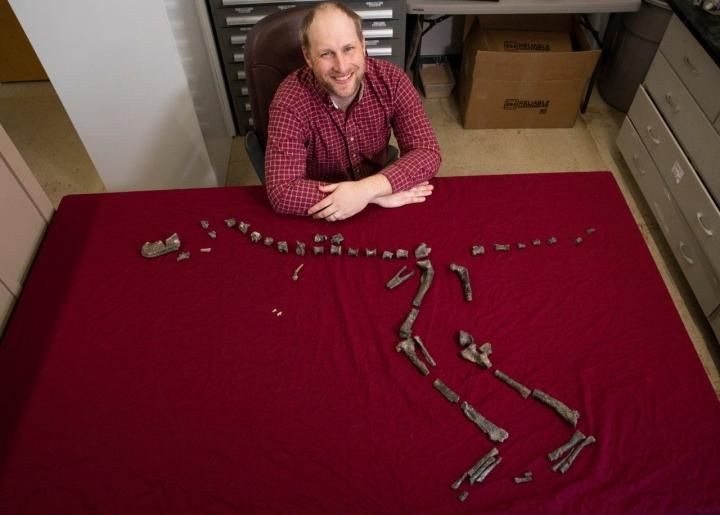This 92 Million-Year-Old Dinosaur Is T-Rex's Relative And Is Three Feet Tall

The fossils of a 92-million-year-old dinosaur were recently discovered by a team of international scientists. The ancient dinosaur is considered to be the long-lost relative of the ferocious T-Rex. The dinosaur has been named as Suskityrannus hazelae. Unlike its humongous relative, this dinosaur was not massive in size. Instead, Suskityrannus hazelae stood only three feet tall and nine feet wide. In other words, the dinosaur was barely bigger than the skull of a fully grown Tyrannosaurus Rex.
The fossils of the Suskityrannus hazelae were discovered by Sterling Nesbitt, an assistant professor at the Virginia Tech College of Science, when he was 16 years old. However, Nesbitt and a team of scientists recently discovered the dinosaurs connection to the T-Rex. According to Nesbitt, Suskityrannus hazelae weighed between 45 to 90 pounds. At the time of its death, the dinoasaur is believed to have been around three years old.
“Suskityrannus gives us a glimpse into the evolution of tyrannosaurs just before they take over the planet,” Nesbitt said in a statement. “It also belongs to a dinosaurian fauna that just proceeds the iconic dinosaurian faunas in the latest Cretaceous that include some of the most famous dinosaurs, such as the Triceratops, predators like Tyrannosaurus rex, and duckbill dinosaurs like Edmotosaurus.”
Compared to the T-Rex, Suskityrannus had a much more delicate skull and feet. It is still unclear as to how small the Suskityrannus' arms were or how many fingers they had. The remains discovered did not contain any arm fossils. The researchers also discovered a link between the older and smaller tyrannosaurids from China and North America with the larger tyrannosaurids that walked the earth till dinosaurs as a whole went extinct.

The fossils of two of the prehistoric creatures were discovered in 1997 and 1998 in New Mexico. The first consisted of a partial skull and was found by Robert Denton, who is now a senior geologist with Terracon Consultants. Denton and other researchers discovered the partial skull fossil in the Zuni Basin of western New Mexico during an expedition organized by Doug Wolfe. The latter, more complete fossil of the dinosaur was discovered by Nesbitt, who was then a high school student. Nesbitt made the discovery along with Wolfe and was assisted with sample collection by James Kirkand, who now is at the Utah Geological Survey. The fossils were discovered alongside the remains of other dinosaurs, fish, turtles, lizards, and mammals.
"Essentially, we didn't know we had a cousin of Tyrannosaurus rex for many years," Nesbitt said. “My discovery of a partial skeleton of Suskityrannus put me onto a scientific journy that has framed my career.”
The findings of the study have been published in the journal Nature Ecology & Evolution.
© Copyright IBTimes 2024. All rights reserved.





















